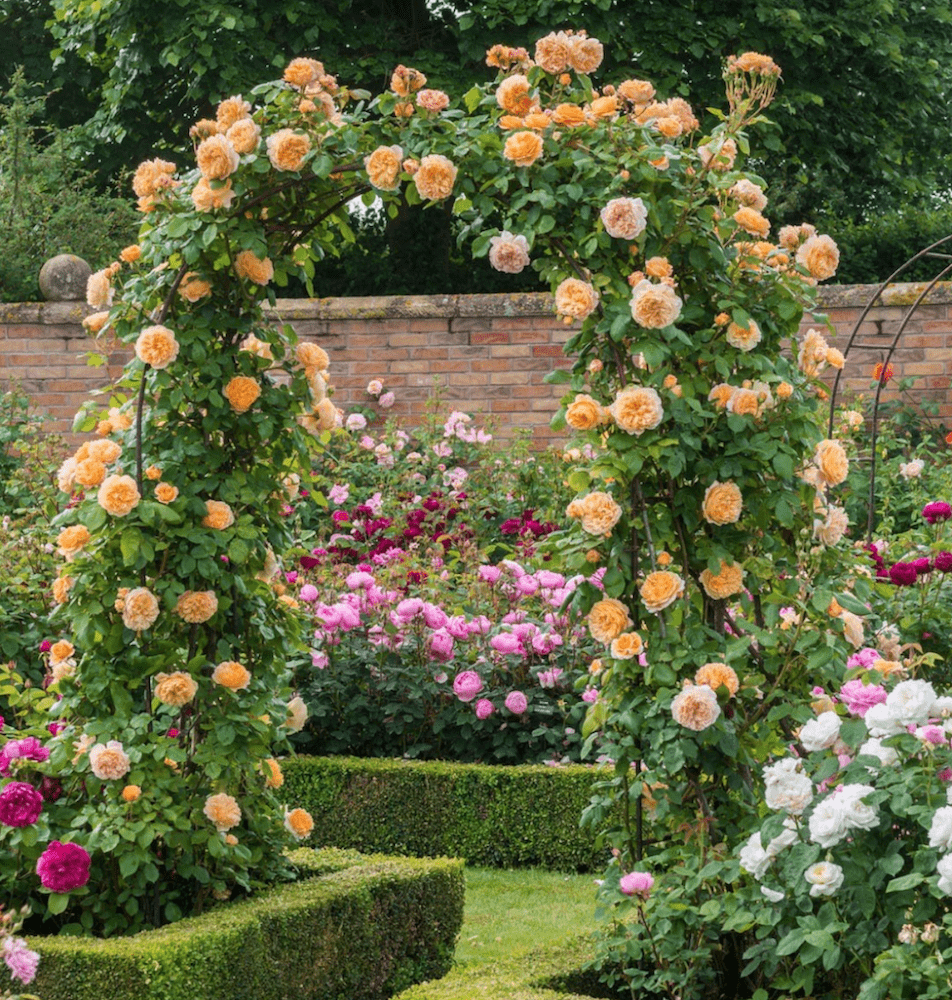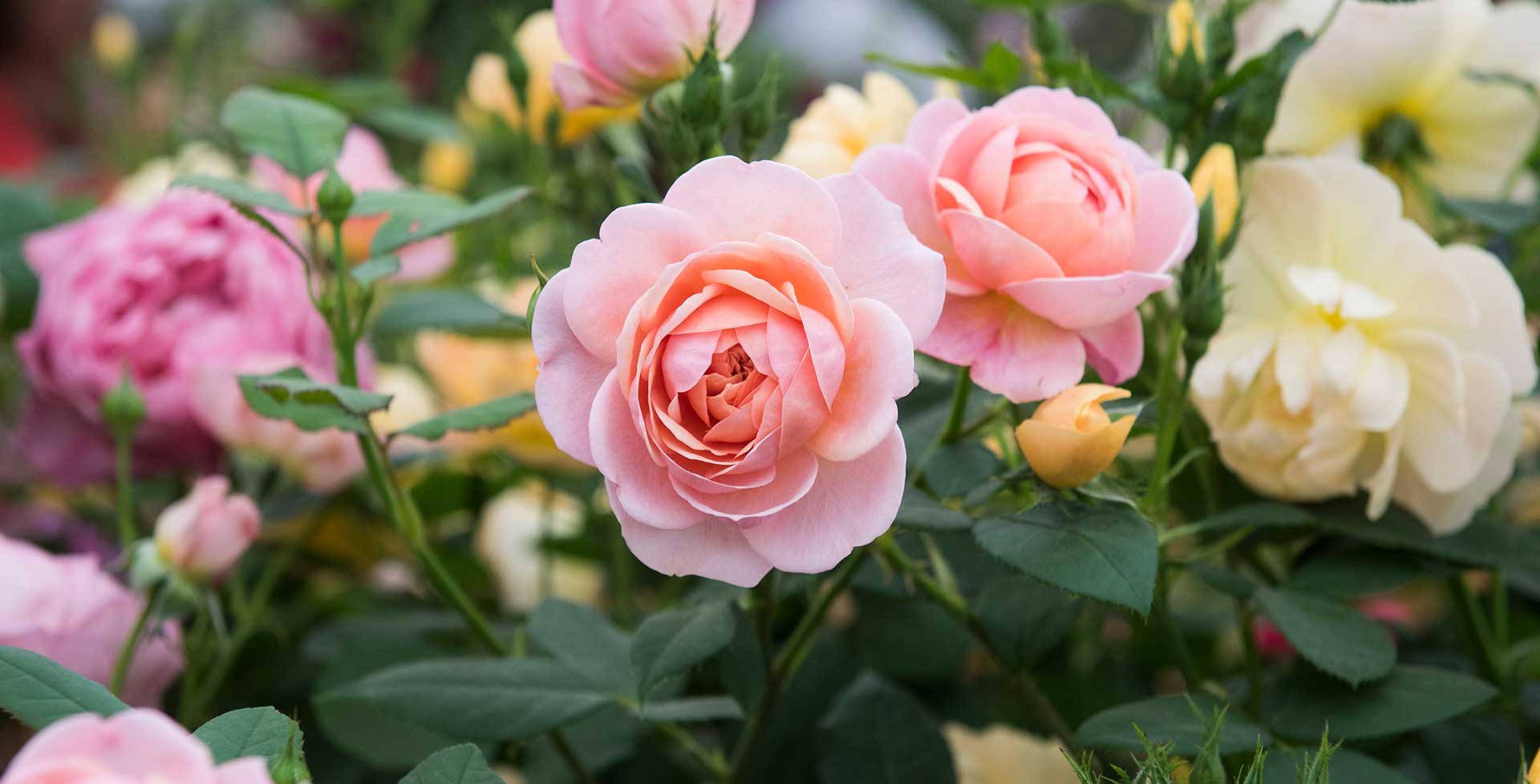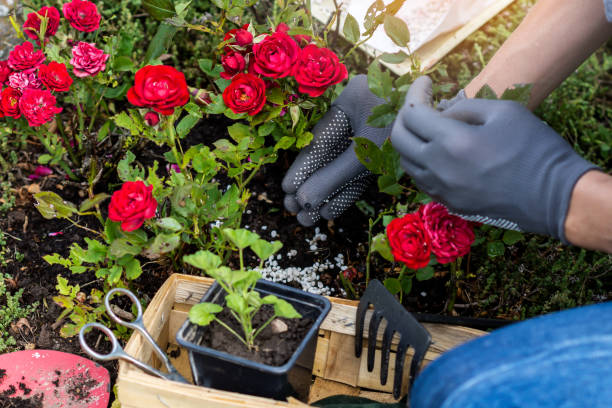Top 20 Fragrant Rose Varieties - The Most Irresistible Scents
Explore 20 fragrant rose varieties that enhance your garden with captivating scents. Discover tips for care and selection to transform your outdoor space.
Oct 22, 2024878 Shares48.7K Views

Roses captivate with their beauty and possess an enchanting fragrance that evokes emotions, creates memories, and elevates any garden. The delightful scent of roses along with their stunning visuals can transform an outdoor space into a sensory paradise.
The Importance Of Fragrance In Roses
Fragrance is one of the most captivating qualities of roses. It has the power to transport us to cherished moments, whether it’s a romantic evening or a sunny afternoon spent in the garden.
Scented roses are sought after not just for their beauty but also for the emotions they evoke. Research has shown that fragrances significantly affect moodand mental well-being, making fragrant roses an ideal choice for enhancing outdoor spaces.
The right fragrance attracts beneficial pollinators to the garden, promoting a healthier ecosystem. The aroma of roses serves as a natural lure for bees and butterflies, essential for pollination and plant health.
Characteristics Of Fragrant Roses
What sets fragrant roses apart from their unscented counterparts? Several factors contribute to the enchanting aroma of these blooms:
- Volatile Compounds: The scent of roses is produced by specific volatile compounds that vary between varieties. These can range from fruity and floral to spicy and musky.
- Genetics: The genetic makeup of a rose determines its fragrance profile, allowing gardeners to select varieties that meet their preferences.
Ideal Growing Conditions
Growing conditions play a crucial role in fragrance intensity. Roses exposed to adequate sunlight, proper watering, and suitable soil often produce more aromatic flowers. Here are some key factors to consider:
- Sunlight: Most fragrant roses thrive in full sunlight, requiring at least 6-8 hours of direct sun daily.
- Soil Quality: Use well-drained soil enriched with organic matter to provide essential nutrients.
- Watering: Ensure consistent watering, especially during dry spells, but avoid waterlogging.
Understanding these characteristics is essential for selecting and caring for fragrant roses effectively.
Top 20 Fragrant Rose Varieties
Here are twenty of the most fragrant rose varieties, each with unique scent profiles and characteristics.
1. Damask Rose (Rosa Damascena)
- Fragrance Notes: Rich and sweet.
- Classification: Often used in perfumery.
- Color: Soft pink.
- Hardiness Zones: 5-9.
- Plant Size: Up to 4 feet tall.
- Light Requirements: Full sun.
The Damask Rose is celebrated for its iconic scent, making it a favorite for perfumes and essential oils.
2. 'Lady Emma Hamilton'
- Fragrance Notes: Fruity with hints of pear, grape, and citrus.
- Classification: English shrub rose bred by David Austin.
- Color: Tangerine orange.
- Hardiness Zones: 5-9.
- Plant Size: Up to 4 feet tall and wide.
- Light Requirements: Full sun.
This variety offers a stunning color and an enticing fragrance that brightens any garden.
3. 'Double Delight'
- Fragrance Notes: Strong spicy fragrance.
- Classification: Hybrid tea rose.
- Color: Buttery cream edged with strawberry red.
- Hardiness Zones: 3-9.
- Plant Size: Up to 5 feet tall and wide.
- Light Requirements: Full sun.
Known for its striking appearance and delightful scent, 'Double Delight' is a favorite among gardeners.
4. 'Gertrude Jekyll'
- Fragrance Notes: Classic old rose fragrance with fruity notes.
- Classification: English rose.
- Color: Pink.
- Hardiness Zones: 5-9.
- Plant Size: Up to 10 feet tall.
- Light Requirements: Full sun.
Named after the famous gardener, this rose is easy to grow and highly fragrant.
5. 'Eden Rose' (Rosa 'Pierre De Ronsard')
- Fragrance Notes: Romantic and fruity.
- Classification: Climbing rose.
- Color: Soft pink.
- Hardiness Zones: 5-9.
- Plant Size: Up to 12 feet tall.
- Light Requirements: Full sun.
6. 'Fragrant Cloud'
- Fragrance Notes: Citrus, spice, fruit, and rosy damask.
- Classification: Hybrid tea rose.
- Color: Coral red.
- Hardiness Zones: 5-9.
- Plant Size: Up to 5 feet tall and wide.
- Light Requirements: Full sun.
Renowned for its captivating fragrance, 'Fragrant Cloud' is a standout in any garden.
7. 'Just Joey'
- Fragrance Notes: Sweet and fruity.
- Classification: Hybrid tea rose.
- Color: Pale apricot.
- Hardiness Zones: 5-9.
- Plant Size: Up to 4 feet tall and wide.
- Light Requirements: Full sun.
This rose is beloved for its warm color and rich fragrance, making it a garden favorite.
8. 'Mister Lincoln'
- Fragrance Notes: Strong melon fragrance.
- Classification: Hybrid tea rose.
- Color: Velvety red.
- Hardiness Zones: 5-9.
- Plant Size: Up to 6 feet tall.
- Light Requirements: Full sun.
Considered the standard for red roses, 'Mister Lincoln' offers a delightful scent.
9. 'Louise Odier'
- Fragrance Notes: Intense sweet fragrance.
- Classification: Bourbon rose.
- Color: Bright pink.
- Hardiness Zones: 5-9.
- Plant Size: Up to 6 feet tall.
- Light Requirements: Full sun.
This heritage rose is known for its strength as a cut flower.
10. 'Heritage'
- Fragrance Notes: Sweet lemon scent.
- Classification: English shrub rose.
- Color: Soft pink.
- Hardiness Zones: 5-9.
- Plant Size: Up to 5 feet tall.
- Light Requirements: Full sun.
'Heritage' is appreciated for its delicate beauty and pleasant fragrance.
11. 'Autumn Damask'
- Fragrance Notes: Intense aroma.
- Classification: Old-fashioned rose.
- Color: Pink.
- Hardiness Zones: 5-9.
- Plant Size: Up to 5 feet tall and wide.
- Light Requirements: Full sun.
This ancient rose blooms abundantly and is favored in the perfume industry.
12. 'Madame Alfred Carrière'
- Fragrance Notes: Strong spicy-sweet scent.
- Classification: Climbing rose.
- Color: Pink-blushed white.
- Hardiness Zones: 6-9.
- Plant Size: Up to 16 feet tall.
- Light Requirements: Full sun.
This climbing rose is hardy and blooms almost continuously throughout the warmer months.
13. 'Madame Isaac Pereire'
- Fragrance Notes: Deep raspberry-rose scent.
- Classification: Bourbon rose.
- Color: Deep raspberry.
- Hardiness Zones: 6-9.
- Plant Size: Up to 7 feet tall.
- Light Requirements: Full sun.
Renowned for its rich fragrance, this rose is vigorous and shade-tolerant.
14. 'New Dawn'
- Fragrance Notes: Soft and sweet.
- Classification: Climbing rose.
- Color: Light pink.
- Hardiness Zones: 5-9.
- Plant Size: Up to 20 feet tall.
- Light Requirements: Full sun.
This climbing variety is known for its abundant blooms throughout the summer.
15. 'Roseraie De L'Hay'
- Fragrance Notes: Strong, sweet fragrance.
- Classification: Rugosa rose.
- Color: Magenta-purple.
- Hardiness Zones: 3-9.
- Plant Size: Up to 5 feet tall.
- Light Requirements: Full sun.
This hardy rose is noted for its long bloom season and excellent disease resistance.
You Might Like: How To Take Care Of Roses - 2024 Step-by-Step Guide
16. 'America'
- Fragrance Notes: Strongly scented coral-pink.
- Classification: Climbing rose.
- Color: Coral-pink.
- Hardiness Zones: 6-9.
- Plant Size: Up to 16 feet tall.
- Light Requirements: Full sun.
A perfect addition to trellises or fences, 'America' blooms all summer long.
17. 'Julia Child'
- Fragrance Notes: Licorice and spice.
- Classification: Shrub rose.
- Color: Buttery yellow.
- Hardiness Zones: 6-9.
- Plant Size: Up to 3 feet tall.
- Light Requirements: Full to partial sun.
This rose was selected by the Queen of French Cuisine herself for its charming scent.
18. 'Munstead Wood'
- Fragrance Notes: Strong fruity (blackberry) scent.
- Classification: English shrub rose.
- Color: Deep crimson.
- Hardiness Zones: 5-10.
- Plant Size: Up to 3 feet tall.
- Light Requirements: Full sun.
This rose is cherished for its deep color and robust fragrance.
19. 'Scentimental'
- Fragrance Notes: Strong spicy fragrance with sweet notes.
- Classification: Floribunda rose.
- Color: Swirls of burgundy red on creamy white.
- Hardiness Zones: 6-10.
- Plant Size: Up to 4 feet tall.
- Light Requirements: Full sun.
Its unique coloration and scent make it a delightful addition to any garden.
20. 'Honey Perfume'
- Fragrance Notes: Irresistible spicy fragrance.
- Classification: Shrub rose.
- Color: Apricot yellow.
- Hardiness Zones: 5-10.
- Plant Size: Up to 4 feet tall.
- Light Requirements: Full sun.
This rose offers a delightful scent that is hard to resist.
Growing And Caring For Fragrant Roses
To cultivate fragrant roses successfully, consider the following tips:
- Soil Quality: Use well-drained soil enriched with organic matter to provide essential nutrients.
- Sunlight: Most fragrant roses thrive in full sunlight, requiring at least 6-8 hours of direct sun daily.
- Watering: Ensure consistent watering, especially during dry spells, but avoid waterlogging.
- Pruning: Regularly prune to encourage new growth and enhance air circulation around the plants.
- Pest Control: Monitor for common pests like aphids and spider mites. Use organic pest control methods when necessary.
- Seasonal Tips: Plant bare-root roses in winter for the best results. Prune in early spring to promote healthy growth.
Common Challenges With Fragrant Roses
Despite their beauty, fragrant roses can face several challenges:
- Pests: Aphids, spider mites, and thrips can threaten the health of your roses. Regular inspection and organic pest control methods can help manage these issues.
- Diseases: Fungal diseases, such as powdery mildew and black spot, can affect rose health. Ensure good air circulation and avoid overhead watering to reduce the risk.
- Environmental Stress: Extreme weather conditions can impact fragrance intensity. Provide adequate protection during harsh conditions, such as heavy rain or extreme heat.
Companion Planting Suggestions
To enhance the beauty and health of your fragrant roses, consider pairing them with companion plants such as:
- Lavender: Its aromatic flowers repel pests and attract pollinators.
- Marigolds: These vibrant flowers deter aphids and other garden pests.
- Thyme: This ground cover helps suppress weeds while attracting beneficial insects.
FAQs About Fragrant Rose Varieties
How Do I Enhance The Fragrance Of My Roses?
To enhance fragrance, ensure your roses receive adequate sunlight, proper watering, and high-quality soil. Regular pruning also promotes healthier blooms.
Can I Grow Fragrant Roses In Pots?
Yes, many fragrant rose varietiescan thrive in pots. Ensure the container has proper drainage and use quality potting mix to support healthy growth.
What Are The Best Conditions For Growing Fragrant Roses?
Fragrant roses typically prefer full sun (6-8 hours), well-drained soil, and consistent watering. Regular fertilization during the growing season also benefits their health.
Do All Roses Have A Fragrance?
Not all roses are fragrant. While many varieties possess delightful scents, some are bred primarily for their appearance and lack significant aroma.
Conclusion
Fragrant roses offer more than just visual appeal; they provide an enchanting sensory experience that enriches any garden. Understanding the characteristics of these blooms and selecting the right varieties can create a fragrant haven that delights the senses.
From classic varieties to modern hybrids, fragrant roses invite exploration and appreciation. Incorporating them into your landscape will fill it with beauty and enchanting scents, transforming your gardening experience.
Latest Articles
Popular Articles

